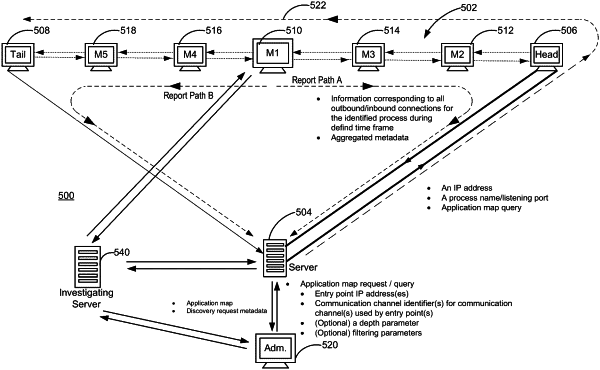| CPC H04L 67/75 (2022.05) [G06F 16/2477 (2019.01); H04L 41/12 (2013.01); H04L 67/10 (2013.01)] | 26 Claims |

|
1. A method of mapping applications executed by machines in a network, comprising:
at a server system connected to the network, wherein the machines in the network comprise a plurality of endpoint machines distinct from the server system, performing an application mapping procedure comprising:
initializing an application dependency map, including adding a first layer of application mapping information to the application dependency map, wherein the application dependency map identifies relationships among application components of one or more multi-tier applications;
sending a first query to one or more of the endpoint machines;
receiving, in response to the first query, information identifying application components that have participated in predefined communications with application components identified in an existing layer of application mapping information in the application dependency map;
adding a second layer of application mapping information to the application dependency map, based at least in part on the information received in response to the first query;
after adding the second layer of application mapping information to the application dependency map, sending a second query to one or more of the of the endpoint machines, the second query being based at least in part on the application dependency map.
|